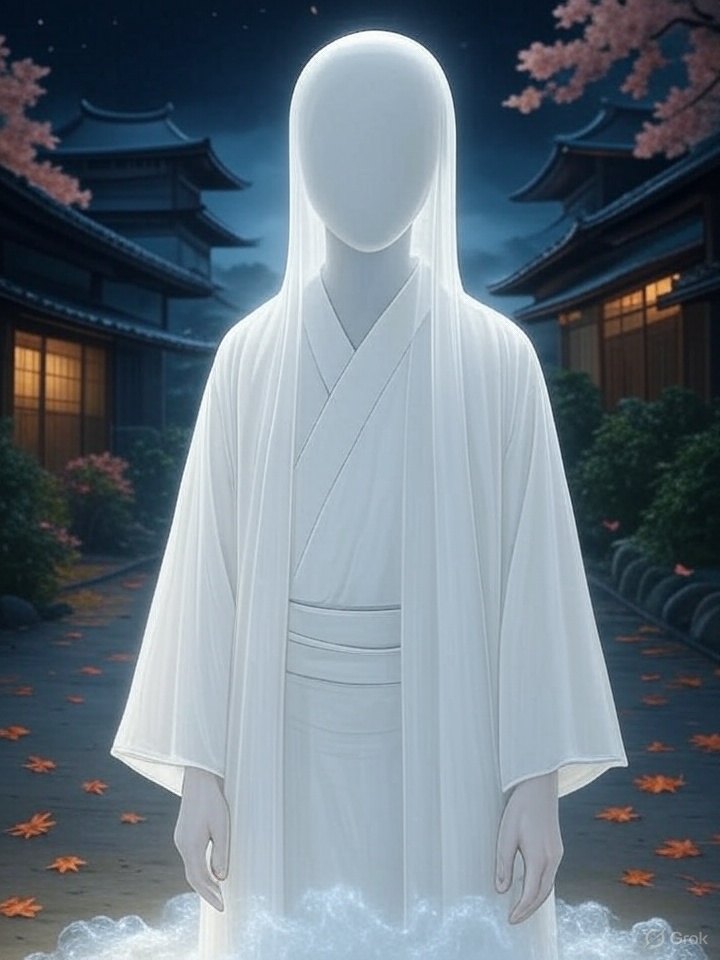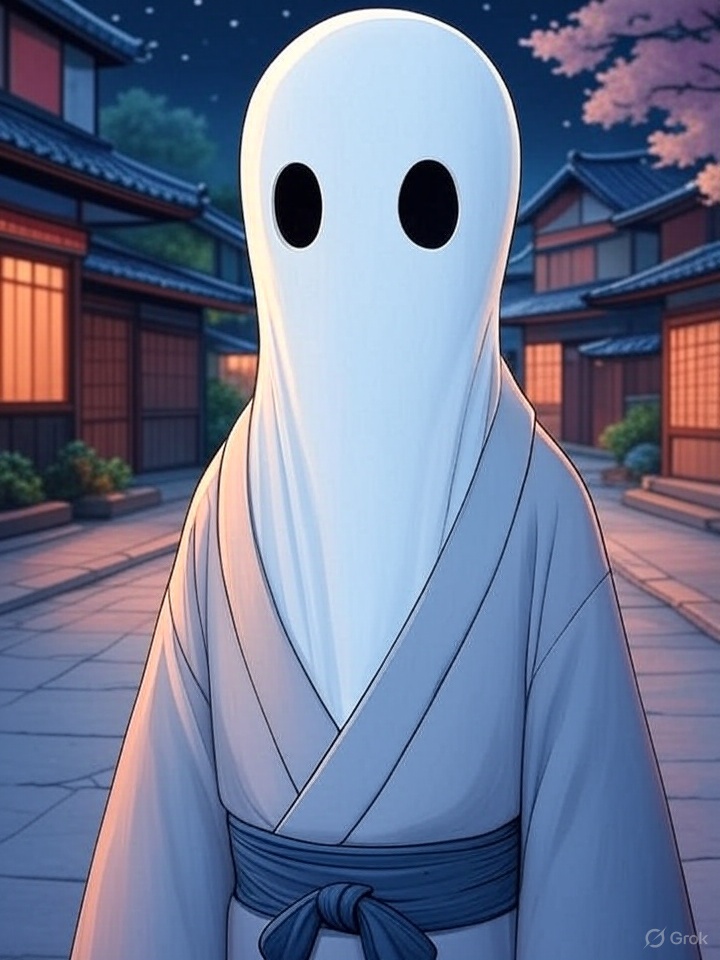Name Meaning
Noppera-bō (のっぺら坊) translates roughly to “featureless monk” or “blank-faced person,” referencing its terrifying appearance.
Origin
- Often appears in Edo-period ghost stories and ukiyo-e art.
- Associated with popular ghost stories and kaidan traditions.
- Appears near rivers, temples, or lonely roads at night.
Appearance
- Looks like a normal human until it turns around or reveals its face.
- Its face is entirely smooth—no eyes, nose, or mouth.
- Sometimes mimics the appearance of friends or family before revealing its blank face.
Behavior & Myths
- Startles travelers by appearing as a familiar figure before unveiling its facelessness.
- Does not attack physically but frightens with its sudden transformation.
- Some legends depict it as a harmless prankster or warning spirit.
Symbolism
- Represents fear of the unknown and the loss of identity.
- Sometimes seen as a metaphor for insincerity or deception.
- Used in art and literature as a psychological symbol.

